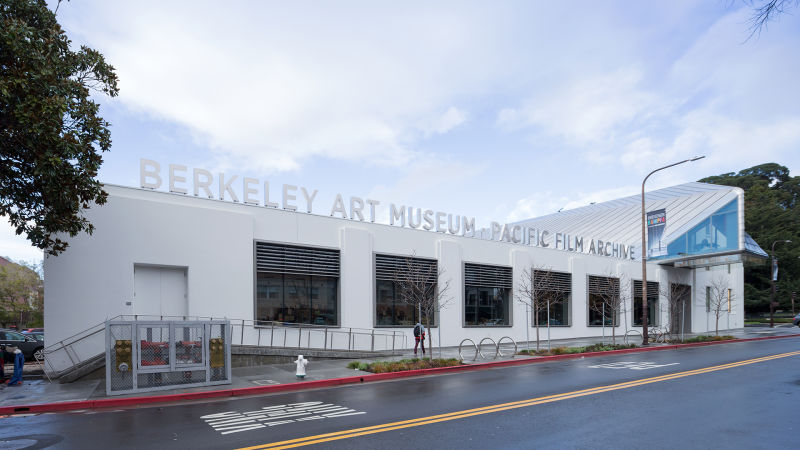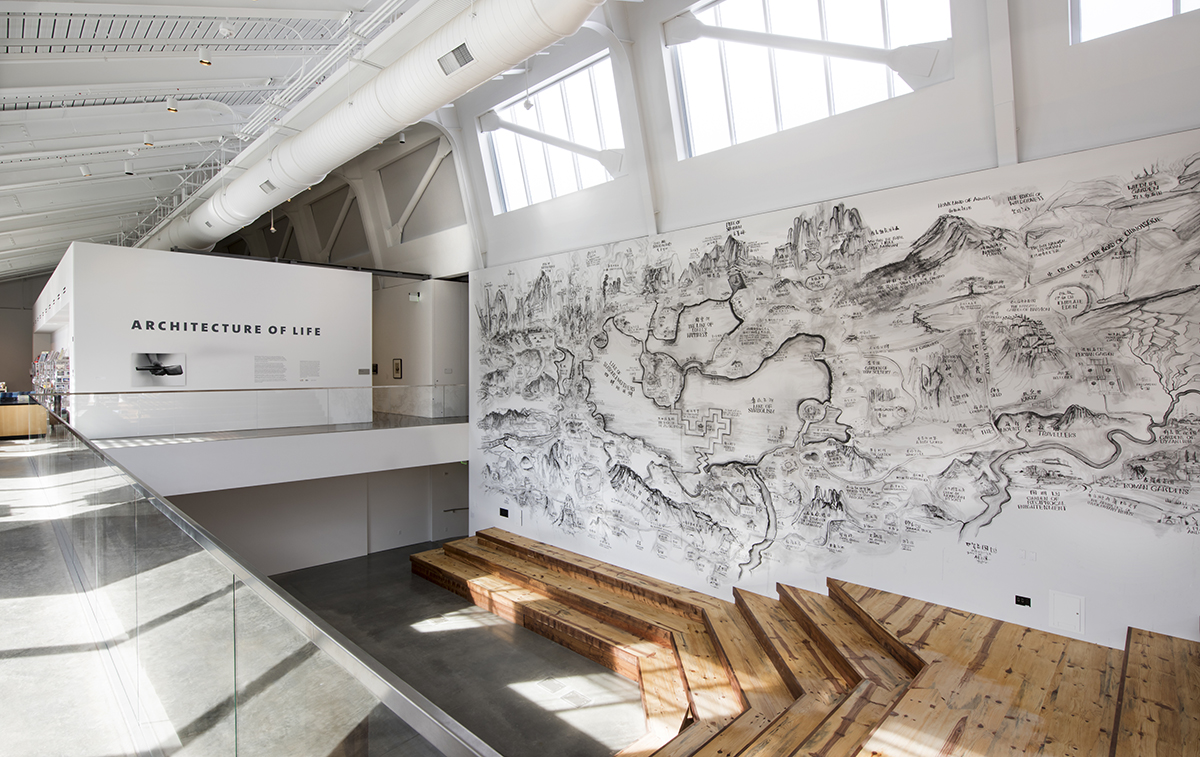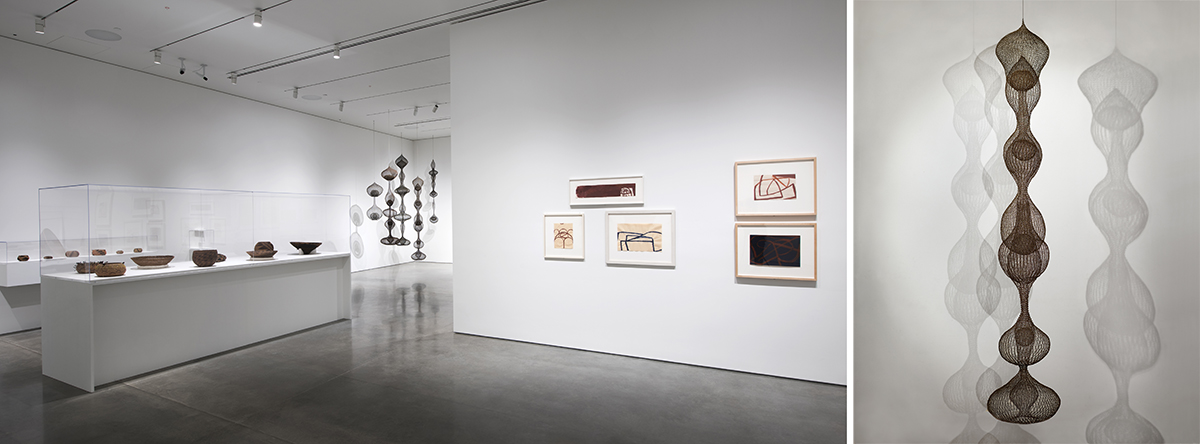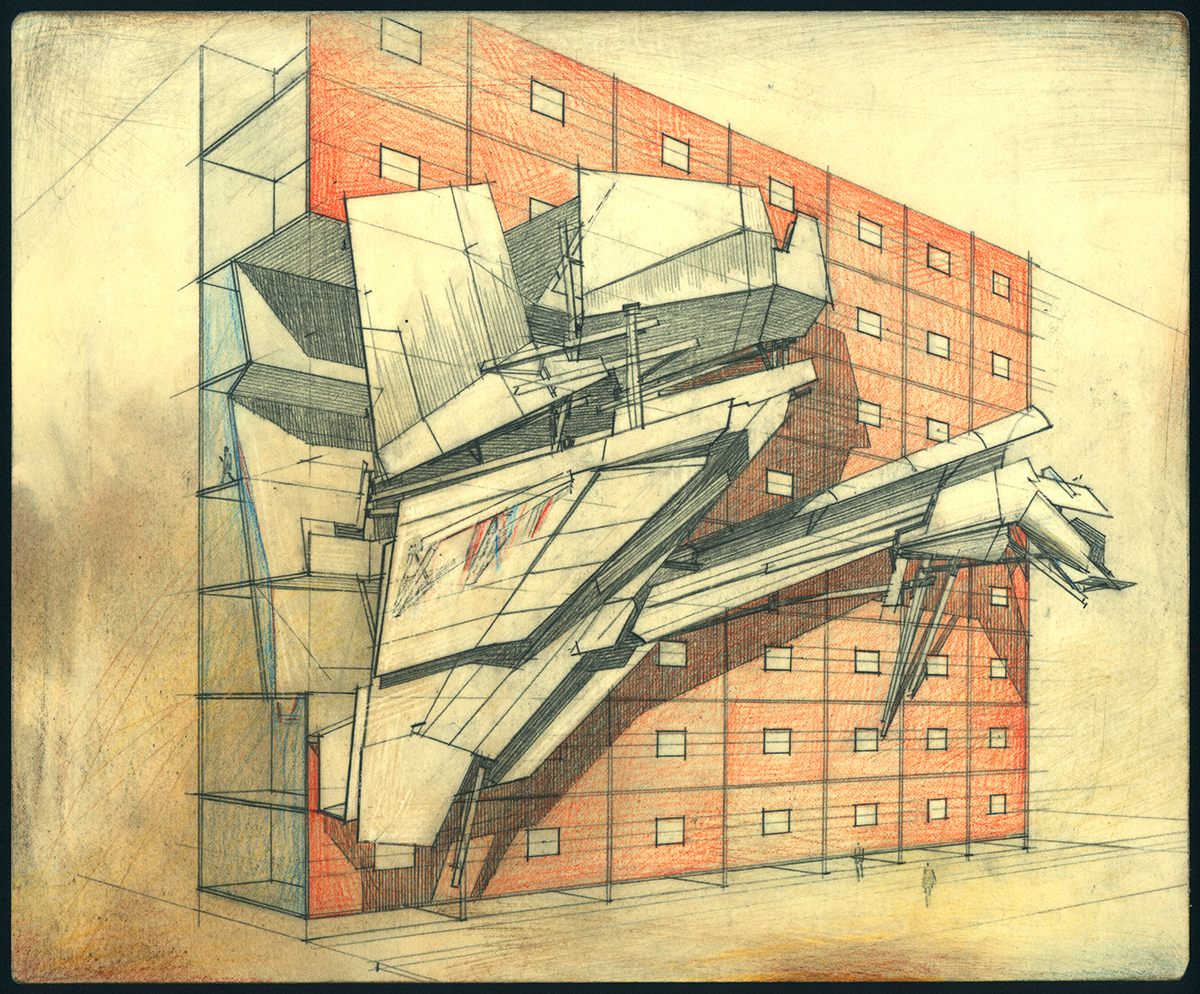If you’ve glimpsed the new Berkeley Art Museum and Pacific Film Archive logo — a blue conversation bubble of sorts, with the brightly-colored letters BAMPFA situated at its center — you may have noticed more than just a typography shift. The slash that once separated the museum’s acronym from the film archive’s is, like the walls that separate buildings, gone.
BAM programming ended in the beloved Mario Ciampi building in December 2014; the PFA Theater closed up shop in its temporary location this past August. Now, upon BAMPFA’s reopening this week, for the first time in over 15 years, art viewers and theater-goers will use the same entrance to attend their respective cultural happenings: 2155 Center Street, just a block from the Downtown Berkeley BART station.
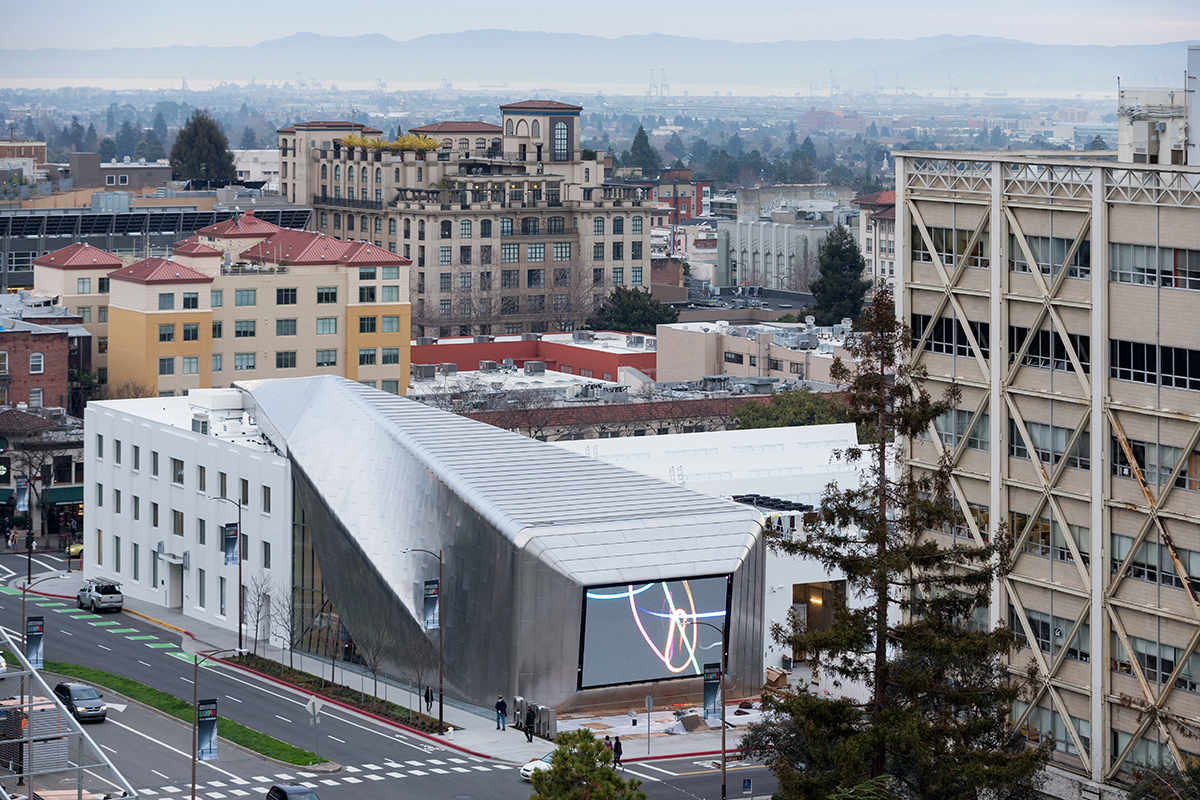
Designed by Diller Scofidio + Renfro (responsible for the new Broad Museum in Los Angeles and the upcoming MoMA expansion project in New York City), the new BAMPFA building adapts an existing UC Berkeley printing plant into a combined home for both institutions. The plant, what architect Charles Renfro calls an “art moderne machine-age shed,” was excavated below street level to double the floorplan, then wrapped with a torqued stainless steel-clad form.
The result is both familiar and futuristic. Inside, the torqued space houses the 232-seat Barbro Osher Theater and a new home for Babette Cafe that cantilevers out above the museum’s front entrance. Snacks can now be consumed while gazing over the walls of the street-level galleries. That’s a good thing — said snacks will be necessary to fuel visitors’ progress through the initial exhibition, Architecture of Life, which easily fills every one of the new museum’s 25,000 square feet of gallery space.
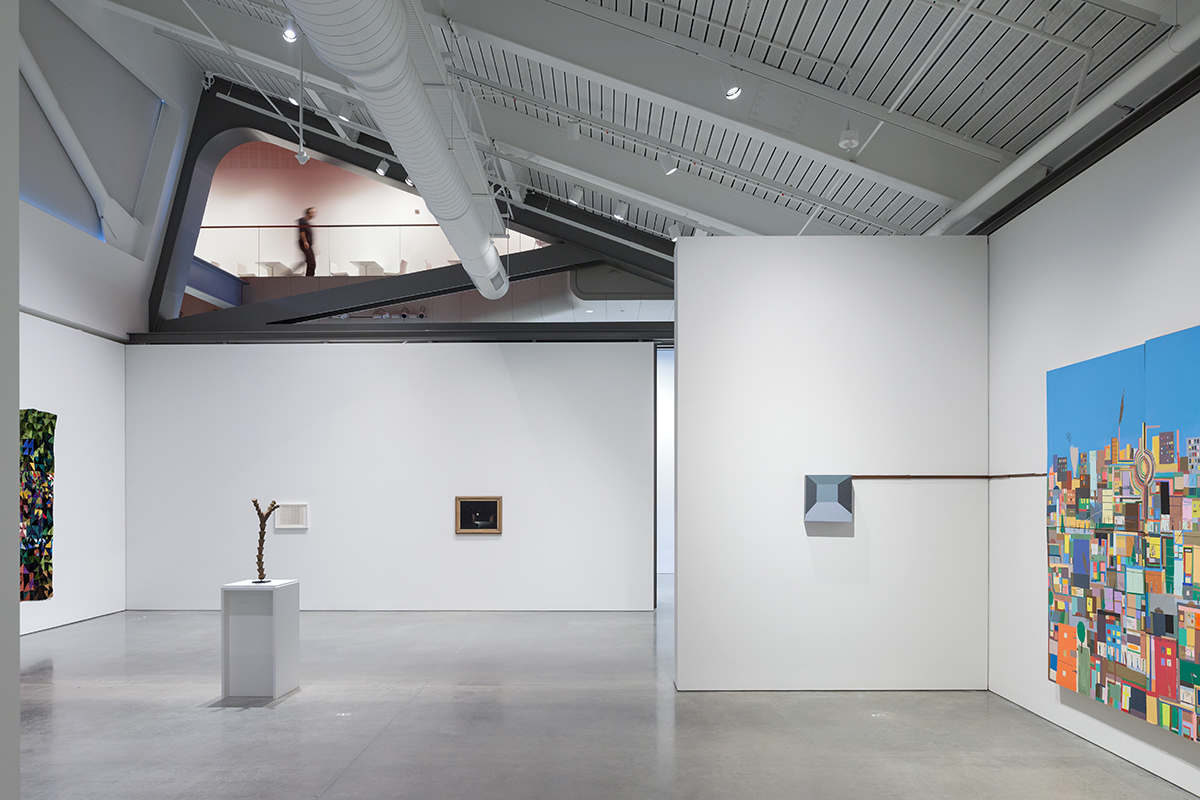
Though wall text announces the exhibition in several places, there is no true start or finish to BAMPFA director Larry Rinder’s inaugural show. Themes, media and methods connect one room to the next, making the process of touring the exhibit one of pleasurable, personal discovery.
